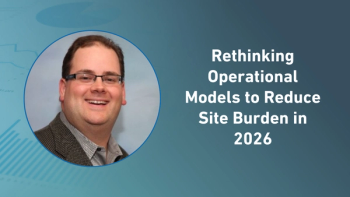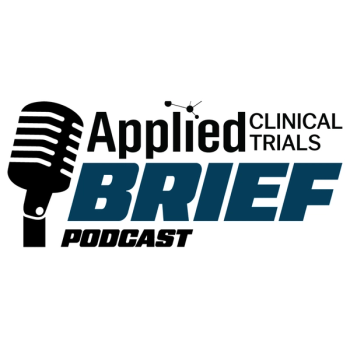
- Applied Clinical Trials-09-01-2011
- Volume 20
- Issue 9
Sneak Peak at FDA Guidance
The New England Journal of Medicine reveals list of biosimilar guidelines.
In January, Merck BioVentures, a division of Merck that delivers biosimilars, entered into an alliance with Parexel to provide clinical development services. In news reports, it was noted that Merck hopes to have five biosimilars in late stage trials in 2012, with hopes to launch products in 2015.
In an interview with Applied Clinical Trials after this announcement, Parexel CEO Josef Von Rickenbach said that the company's regulatory expertise, as well as its biosimilars domain knowledge, influenced Merck to choose Parexel for this alliance. "Merck obviously has a close collaboration with us and is entrusting us to the development of their portfolio in biosimilars. And that's a big deal, any way you look at it, for both companies."
To achieve the milestones that Merck requires, Parexel created a dedicated Merck BioVentures business unit within Parexel. Said Rickenbach, "It's at the current time relatively small because we're still in the planning stages and in the regulatory clarification stages."
Regulatory clarification would translate to mean that FDA does not have a formal guidance on biosimilars in place, so most pharmaceutical companies' decisions in this area rely on looking at the EU's biosimilar path as it is much more advanced. To date, Europe has approved 14 biosimilars with no significant safety issues reported (save for one that was a follow-on biologic called Eprex, an epoetin alfa to treat anemia, which suffered from a significant safety issue in France). The biosimilar developments that have been reviewed in Europe include three classes—human growth hormones, epoetins, and recombinant insulins. With a growth hormone already approved in the United States, as well as the July 2010 FDA approval of a low-weight molecular heparin (enoxaparin), there are pathways to negotiate toward approval.
Rickenbach said, "The biosimilar area in many respects is an emerging area. I think where everybody agrees, all the experts in government, in industry, in our camp, is that it's an important, new emerging area in the pharmaceutical and the biopharmaceutical area, and I can also say that our company has been a part of this emerging field since inception. The European countries have been a little more aggressive in getting biosimilars on their markets and we have been a part of that all along. So we have a lot of knowledge and expertise from a regulatory point of view. Also from a clinical trials point of view."
The FDA offered a bit of light on its thinking in a Perspective piece in the New England Journal of Medicine, August 4, authored by Steven Kozlowski, MD, Janet Woodcock, MD, Karen Midthun, MD, and Rachel Behrman Sherman, MD. In a Ropes & Gray attorney newsletter alert, available at this link,
- FDA must, as a matter of initial priority, develop scientific criteria to evaluate how similar a biosimilar must be to a reference product to be close enough for approval.
- A "one-size-fits-all" approach will not work; FDA scientists will consider various types of information or the "totality of the evidence" to assess biosimilarity.
- A totality of the evidence approach contemplates the use of multiple, complementary methods that allow for the evaluation of more attributes of a product at greater sensitivity.
- Animal and clinical studies will "for the foreseeable future" be required for approval of protein biosimilars, but the scope and extent of such studies may be reduced.
- The totality of the evidence approach will require applicants to "carefully tailor" animal and human testing to address any "residual uncertainty."
- To provide helpful advice on the type of animal and human testing required for a biosimilar, an extensive product review (exceeding a typical pre-IND meeting) will be required early on.
- The agency intends to evaluate immunogenicity in a risk-based manner, and will consider protein aggregation and whether the product stimulates immunity to nonredundant self-proteins.
- FDA will need to establish a robust pharmacovigilance program that allows for ready identification of each biosimilar product and manufacturer.
- For products seeking a designation of "interchangeability," FDA will enunciate regulatory standards outlining data requirements.
- The agency will develop standards to ensure that biosimilar products, which have not been deemed interchangeable, are not inadvertently substituted for a reference product without the prescriber's consent.
A formal guidance from FDA is expected this year.
—Lisa Henderson
Editor's Note: Applied Clinical Trials is hosting a webinar "Bringing Biosimilars to Market," September 21 at 11 a.m. EDT. Register for this free live webinar or view on-demand at
Articles in this issue
over 14 years ago
Applied Clinical Trials Digital Edition - September 2011over 14 years ago
Most Protocols Require Multiple Amendmentsover 14 years ago
Recruitment Rolesover 14 years ago
Uniformity Sought for Research Standardsover 14 years ago
EMA Commits to London for a Quarter Centuryover 14 years ago
Cell Phone Key to REMOTE Data Collectionover 14 years ago
Clusters' Last Stand?over 14 years ago
Lost to Follow-Up Survey Resultsover 14 years ago
Business and News Update September 2011over 14 years ago
Pharma Companies Lose Facebook PrivilegesNewsletter
Stay current in clinical research with Applied Clinical Trials, providing expert insights, regulatory updates, and practical strategies for successful clinical trial design and execution.



